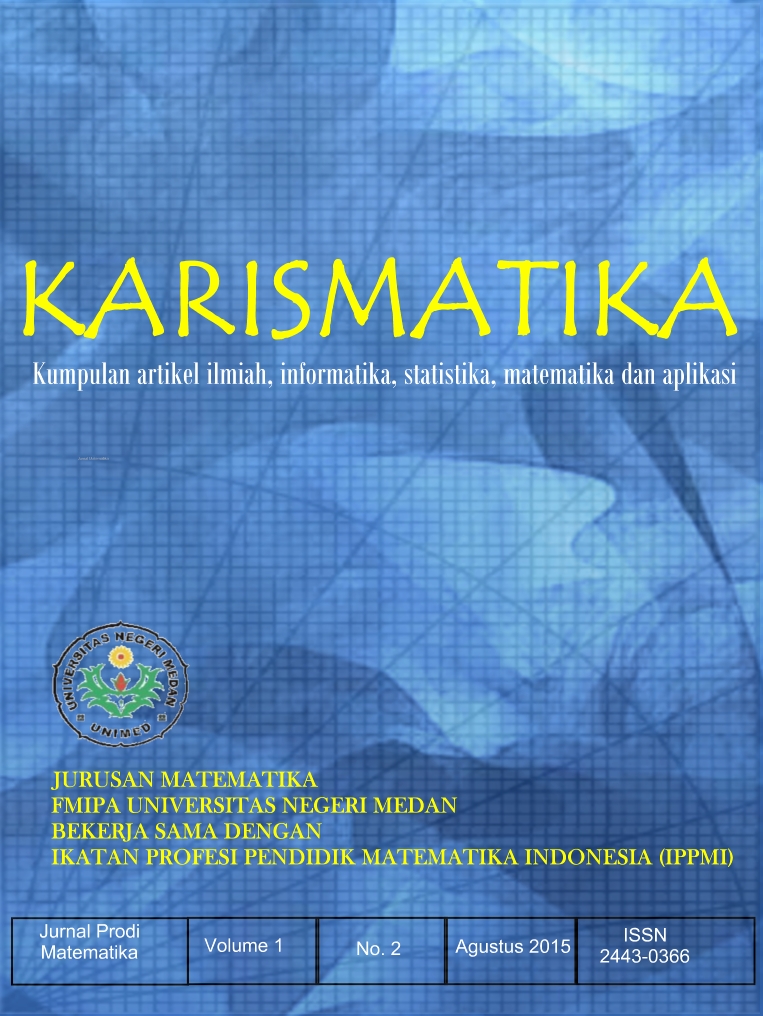PENGAJARAN TITIK INTERNAL PADA PENGUBINAN BERATURAN SECARA KOMBINATORIK
DOI:
https://doi.org/10.24114/jmk.v1i2.17065Abstract
ABSTRAKArtikel ini mengenai pembelajaran pengubinan beraturan yang meliputi pengubinan segitiga beraturn, pengubinan persegi dan pengubinan segi enam beratufran. Jumlah titik maksimum dari pengubinan beraturan dengan n-objek dapat diperoleh dengan memperhatikan pola ubin dan dengan menganalkisis titik internal. Selanjutnya, dengan menggunakan konsep aljabar SMA dan kombinasi, jumlah simpul, tepi, dan siklus dapat dihitung berdasarkan titik internal. Artikel ini untuk jumlah titik maksimum segitiga beraturan dan pengubinan persegi.Kata kunci: pengubinan beraturan, objek, poligon beratufran, titik tepi, siklus, titik internal ABTRACT This article studies the teaching of regular tessellations that includes regular triangle tessellation, square tesselation and regular hexagon tessellation. The number of maximum vertex of a regular tesselation with n-tilling can be obtained by taking into account the tiling patterns and by analysing the internal vertex. Furthermore, using the concept of high school algebra and combinatories, the number of vertices, edges and cycles can be enumerated based on the internal vertex. This article for The number of maximum vertex of a regular triangle and square tessellation.Keyword: Regular tessellations, tillings, regular polygon, vertex, edges, cycles, internal vertexDownloads
Published
2015-08-07
Issue
Section
Articles
License

This work is licensed under a Creative Commons Attribution 4.0 International License
Authors who publish with this journal agree to the following terms:
- Authors retain copyright and grant the journal right of first publication with the work simultaneously licensed under Creative Commons Attribution 4.0 International License that allows others to share the work with an acknowledgement of the work's authorship and initial publication in this journal.
- Authors are able to enter into separate, additional contractual arrangements for the non-exclusive distribution of the journal's published version of the work (e.g., post it to an institutional repository or publish it in a book), with an acknowledgement of its initial publication in this journal.Penulis.
- Authors are permitted and encouraged to post their work online (e.g., in institutional repositories or on their website) prior to and during the submission process, as it can lead to productive exchanges, as well as earlier and greater citation of published work (Refer to The Effect of Open Access).

